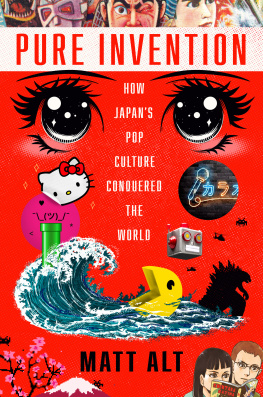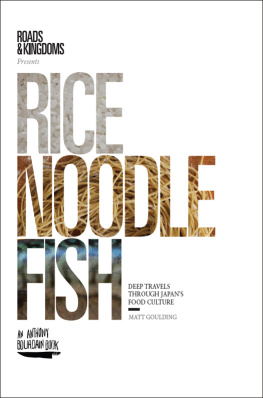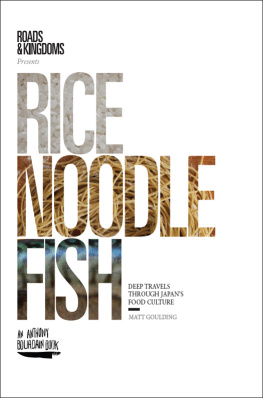Matt Alt - Pure invention: How Japans Pop Culture Conquered the World
Here you can read online Matt Alt - Pure invention: How Japans Pop Culture Conquered the World full text of the book (entire story) in english for free. Download pdf and epub, get meaning, cover and reviews about this ebook. year: 2020, publisher: Crown, genre: Romance novel. Description of the work, (preface) as well as reviews are available. Best literature library LitArk.com created for fans of good reading and offers a wide selection of genres:
Romance novel
Science fiction
Adventure
Detective
Science
History
Home and family
Prose
Art
Politics
Computer
Non-fiction
Religion
Business
Children
Humor
Choose a favorite category and find really read worthwhile books. Enjoy immersion in the world of imagination, feel the emotions of the characters or learn something new for yourself, make an fascinating discovery.
- Book:Pure invention: How Japans Pop Culture Conquered the World
- Author:
- Publisher:Crown
- Genre:
- Year:2020
- Rating:3 / 5
- Favourites:Add to favourites
- Your mark:
- 60
- 1
- 2
- 3
- 4
- 5
Pure invention: How Japans Pop Culture Conquered the World: summary, description and annotation
We offer to read an annotation, description, summary or preface (depends on what the author of the book "Pure invention: How Japans Pop Culture Conquered the World" wrote himself). If you haven't found the necessary information about the book — write in the comments, we will try to find it.
Matt Alt: author's other books
Who wrote Pure invention: How Japans Pop Culture Conquered the World? Find out the surname, the name of the author of the book and a list of all author's works by series.
Pure invention: How Japans Pop Culture Conquered the World — read online for free the complete book (whole text) full work
Below is the text of the book, divided by pages. System saving the place of the last page read, allows you to conveniently read the book "Pure invention: How Japans Pop Culture Conquered the World" online for free, without having to search again every time where you left off. Put a bookmark, and you can go to the page where you finished reading at any time.
Font size:
Interval:
Bookmark:
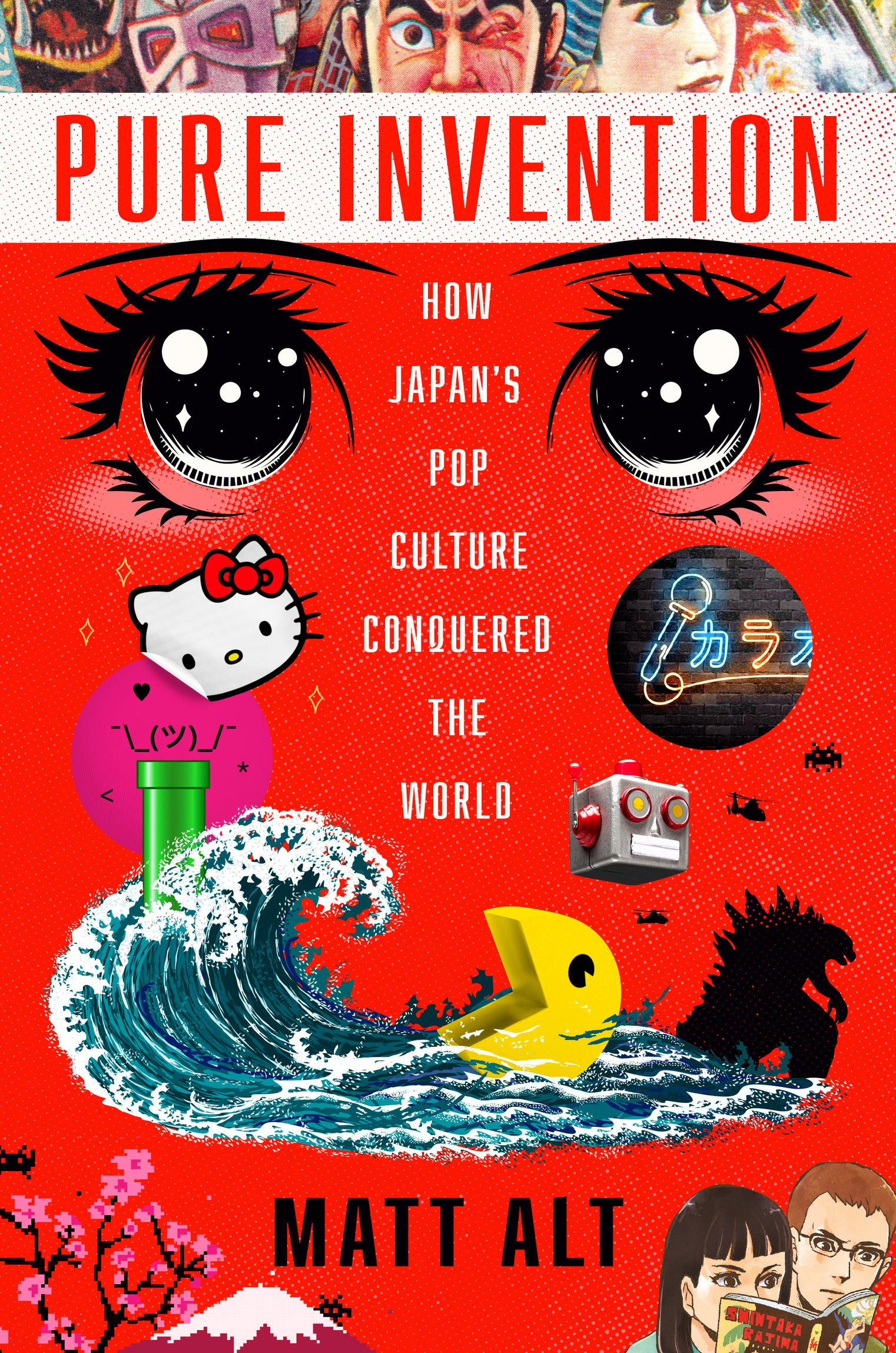
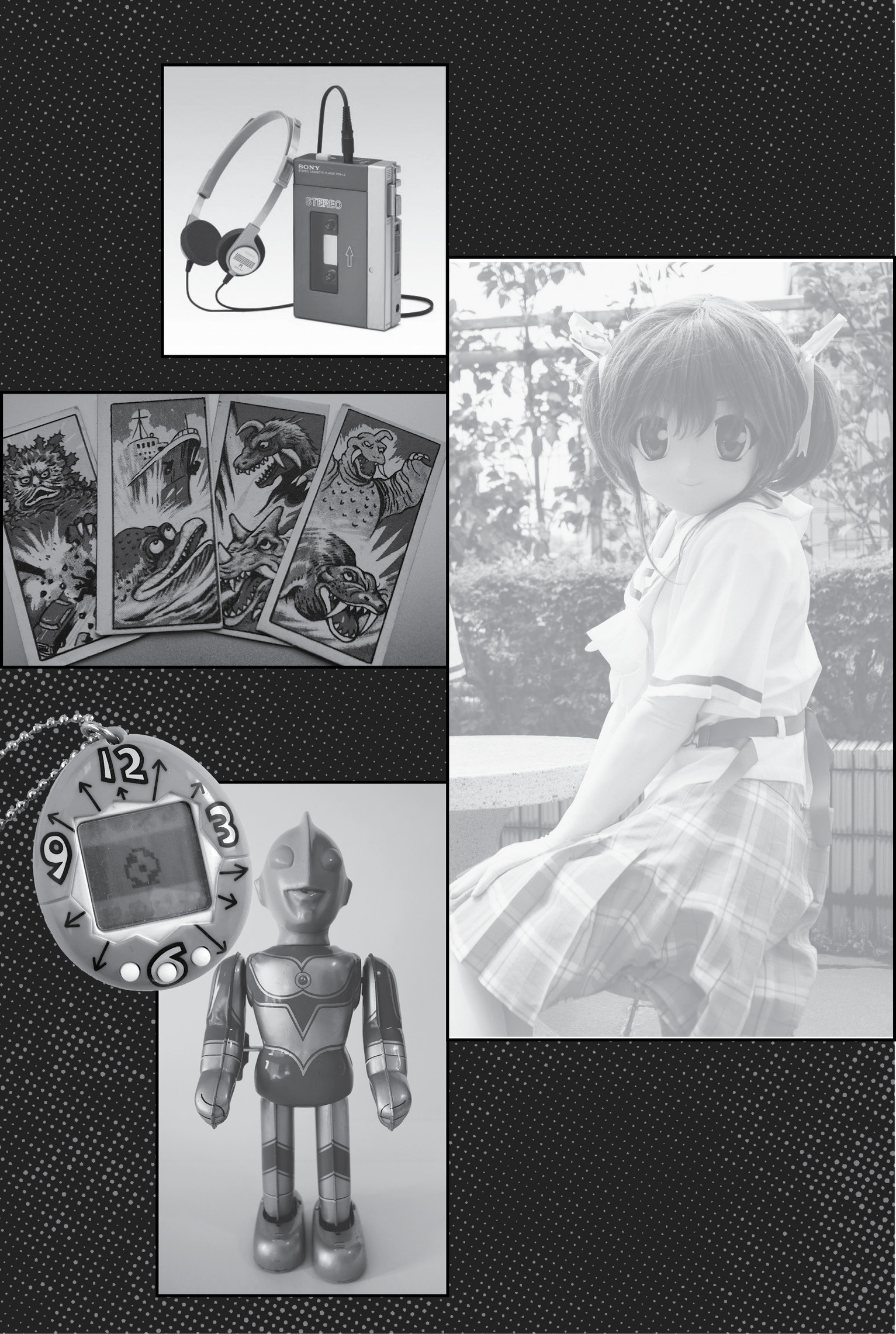
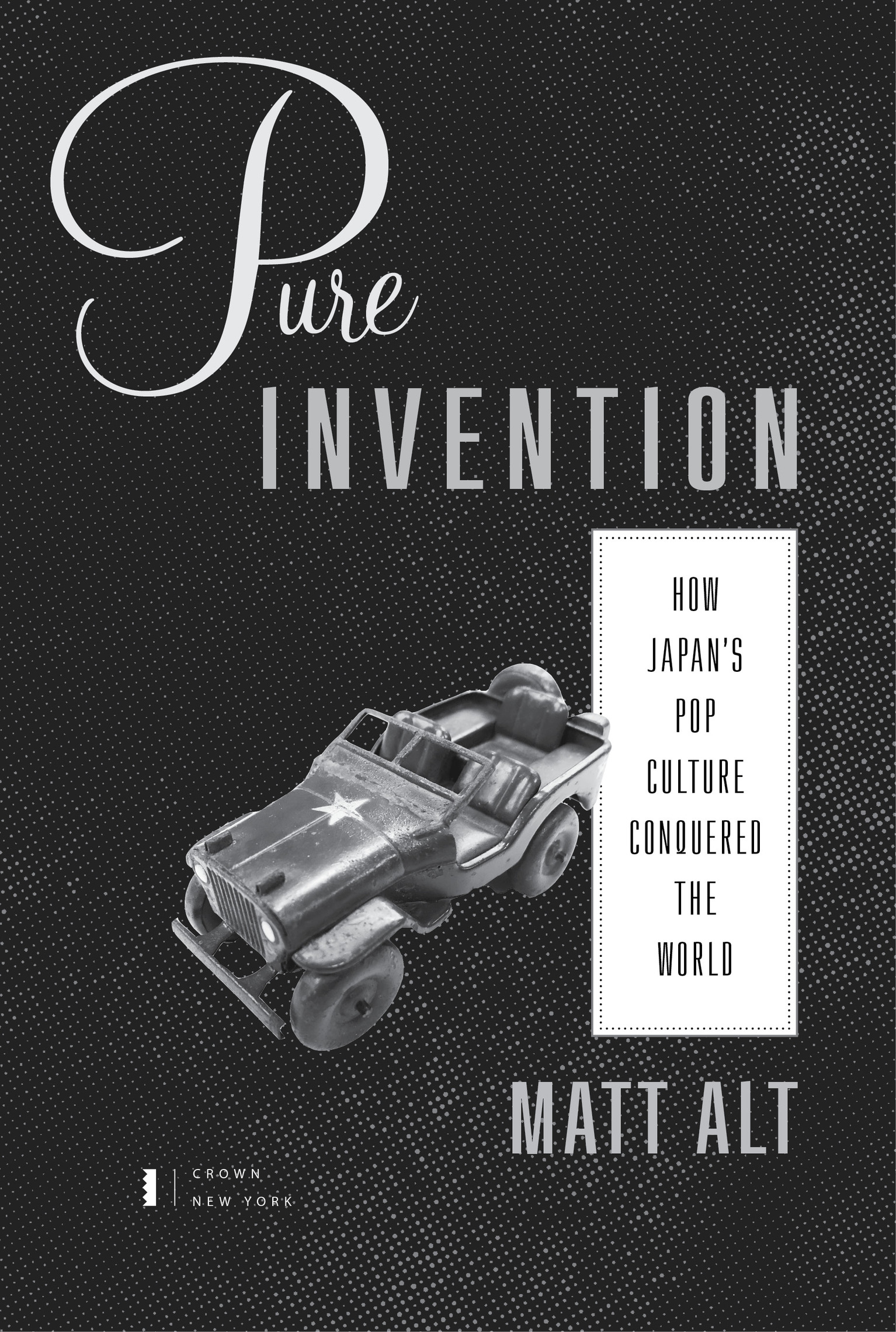
Copyright 2020 by Matt Alt
All rights reserved.
Published in the United States by Crown, an imprint of Random House, a division of Penguin Random House LLC, New York.
Crown and the Crown colophon are registered trademarks of Penguin Random House LLC.
Hardback ISBN9781984826695
International edition ISBN9780593236741
Ebook ISBN9781984826701
randomhousebooks.com
Cover Design: Michael Morris
Cover images: courtesy of the author (illustration strip); stonepic/Getty Images (eyes); SOPA Images/Getty Images, Intellson/Shutterstock (Hello Kitty); Bibadash/Shutterstock (sparkles); Tatiana Liubimova/Getty Images (wave); Thanaphat Kingkaew/Shutterstock (tube: 18percentgrey/Shutterstock (robot); Arina Kronkova/Shutterstock (mountain); ArifinArt/Shutterstock(Godzilla); ComicSans/Getty Images (neon sign): Shinkichi (couple); adventtr/Getty Images (Pac-Man); Aerial3/Getty Images (texture)
ep_prh_5.5.0_c0_r2
In fact the whole of Japan is pure invention.
There is no such country, there are no such people
The Japanese people are, as I have said, simply a mode of style, an exquisite fancy of art.
OSCAR WILDE, The Decay of Lying, 1891
A WOMANS FACE emerges from darkness. She kneels before a machine whose output bathes her angular features in an eerie green light. She rises and walks away, footfalls echoing on the pavement. A basket of flowers sways from the crook of one elbow, the only sign of organic life in this dark, mechanized place. As she moves from shadow into the light of a streetlamp, a strange-looking car roars by, momentarily obscuring our view. The camera pulls back to reveal our heroine standing before a shuttered storefront, pedestrians hurrying past. Who is she waiting for? We barely have time to wonder as the camera pans up to reveal enormous neon signs and billboards, cryptic brand names looming over the cityscape. This is a consumer metropolis, from the looks of itbut where? Is this Times Square? Downtown Tokyo? The camera pulls farther back, revealing more of a mysterious urban landscape that, it becomes obvious, is nowhere we have ever seennowhere that has ever existed. We soar over rooftops, turrets, and machinery, all encircled by high walls marked with a mix of Arabic numerals and Asian calligraphy. A tense drumbeat swells as smokestacks belch into the midnight sky. This is less a city than a fortress; a literal military-industrial complex.
The screen flares, and a title appears: FINAL FANTASY VII. The rising strains of a synthesizerhaunting, melancholichint at wonders to come.
Final Fantasy VII was a video game, and when it debuted in 1997, the world had never seen anything like it. It was the latest installment in a popular (and increasingly misnamed) series, but previous Final Fantasy titles had been delivered in the standard, two-dimensional, squashed and flattened perspective of traditional video games. Final Fantasy VII was a different beast altogether. Though blocky and primitive by modern standards, it was fully rendered in three dimensionsa major technological feat for the era. Even more groundbreaking, it dared to presume something new: that a video game could have the dramatic pull of a Hollywood blockbuster.
Rather than the usual twitch-reflex fisticuffs and gun battles, Final Fantasy VII plunged players into the midst of a drama. Their role was one of a ragtag band of ecoterrorists determined to stop a faceless corporation from sucking their planet dry of its lone energy source. We learn that the waiting woman is Aeris, a flower peddler who turns rebel in the course of her quiet romance with the player-character, a former soldier with the disarming name of Cloud. Final Fantasy VII presented gamers with a cast as well developed as those from television shows or movies, and it followed them through an unpredictable, at times deeply moving narrative. The games dramatic peakAeriss shocking, too-soon deathaffected young players so profoundly that one modern critic has called it the moment when gaming culture stood still.
Of course, the brave new world of Final Fantasy VII wasnt actually out of Hollywood at all. It was a Tokyo blockbuster, and it would inject a megadose of Japanese sensibilities into the American mainstream: big-eyed, bushy-haired anime characters and their manga-style melodrama; androgynous heroes; the very idea that video games could be meditative explorations as well as thrill rides.
Sonys marketing team poured $30 million, unprecedented for a video game, into an all-out media blitz modeled on the campaigns for tentpole American films. They targeted young audiences with ads in Marvel and DC comic books, adults with spots in Rolling Stone, Playboy, and Spin, and everyone with slick commercials that aired in movie theaters, during football games, on MTV, even during Saturday Night Live. They said it couldnt be done in a major motion picture, teased one ad, taking aim at the establishment. They were right! Each commercial ended with a close-up of the PlayStation logo, with a young female voice robotically intoning the word as pronounced in Japanese: purei-sutayshon!
The previous bestselling PlayStation title, the British-made Tomb Raider, sold a very respectable one hundred fifty thousand copies in the first quarter of 1997. Final Fantasy VII sold a million copies in the quarter after its September release. Players didnt seem to mind the games rushed translation, with occasionally misspelled character names and meme-worthy moments like Aeris declaring of another character, This guy are sick!! If anything, the garbled language only added to the games exotic cachet, reinforcing the idea that it had emerged from a real-life technopolis almost as alluring as the fictional setting of the game itself. Sales would eventually reach thirteen million copies worldwide.
IN THE LATE 1800s, right at the cusp of the twentieth century, a new craze swept the Western world: Japonisme. Japan had reopened its ports only a few decades earlier. Tastemakers in England, France, and America pounced on its art and literature, projecting upon the nation values they believed their own societies had abandoned in the drive for industrial advancement. Japan was a great and glorious country whose people are brave beyond all measure, wise beyond all telling, amiable to excess, and extraordinarily considerate, in the opening lines of a picture book based on the smash-hit 1885 Gilbert and Sullivan play, The Mikado. This was the enthusiastically condescending mindset Oscar Wilde invoked and subverted when he referred to Japan as pure invention: Japan as Western fantasy. The antique land, as the Victorians called it, would prove a compelling vision for many years. It would take World War II to derail it.
After Japans inglorious defeat in 1945, the nations makers did their best to obscure the origins of the products they sold to the world. A decade later, notoriously gruff secretary of state John Foster Dulles blithely informed Prime Minister Shigeru Yoshida that Japan should never expect to find a big market for its products in America, because Japanese dont produce the things that we want. He was even more condescending in private, telling a confidant that suicide is not an illogical step for anyone concerned about Japans economic future.
Font size:
Interval:
Bookmark:
Similar books «Pure invention: How Japans Pop Culture Conquered the World»
Look at similar books to Pure invention: How Japans Pop Culture Conquered the World. We have selected literature similar in name and meaning in the hope of providing readers with more options to find new, interesting, not yet read works.
Discussion, reviews of the book Pure invention: How Japans Pop Culture Conquered the World and just readers' own opinions. Leave your comments, write what you think about the work, its meaning or the main characters. Specify what exactly you liked and what you didn't like, and why you think so.

